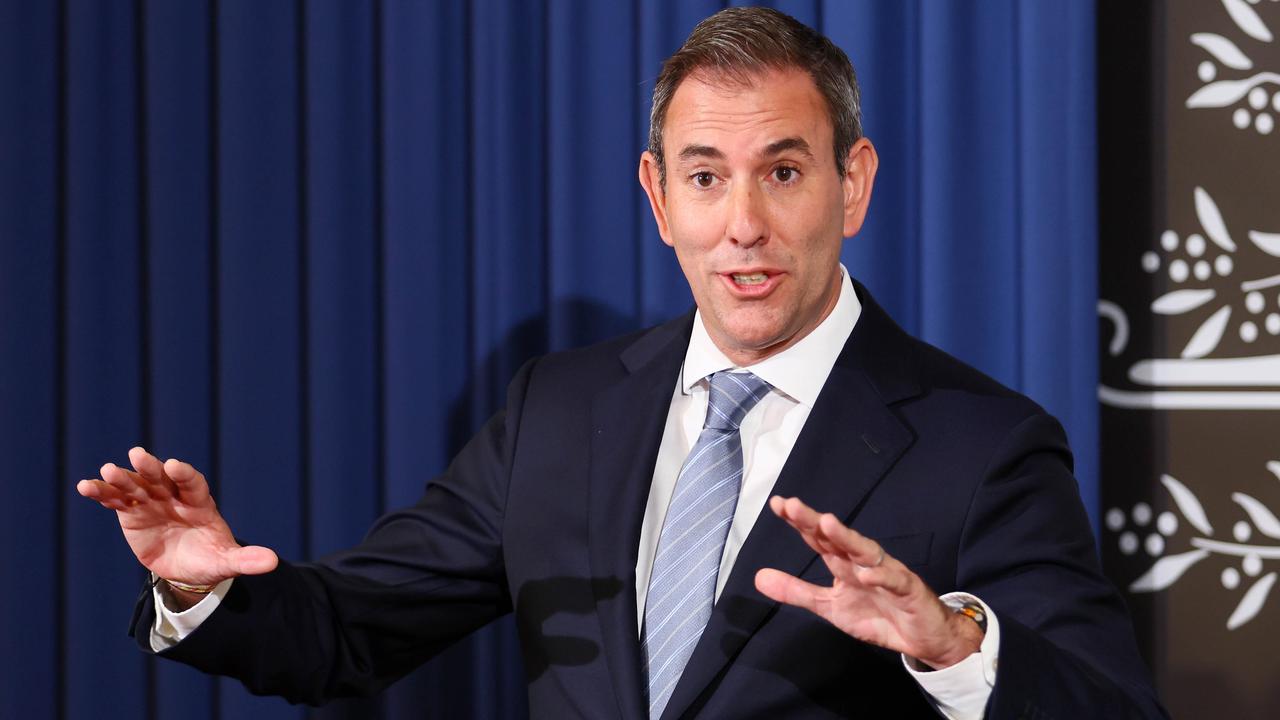Federal budget 2024: Quick five-minute guide, how it affects you
Millions of Aussies will welcome tax cuts, bill relief and frozen medicine prices. But others will feel pain with the cost of living blowing out. See what’s in the budget and how it affects you.
Fed Budget
Don't miss out on the headlines from Fed Budget. Followed categories will be added to My News.
With a forecast surplus of $9.3 billion, a huge boost to manufacturing and action on the cost of living, Labor’s third budget since it came to power has one eye on the big picture and another on the ballot box.
On the hip pocket measures, many Australians will welcome new $300 energy bill rebates, a freeze on the cost of medicines and tough talk about monitoring the supermarkets, on top of the already-announced tax cuts and addition of superannuation to paid parental leave.
But the budget also paints a strained financial outlook for Australia, with the economy tipped to grow just 1.75 per cent this financial year, and the debt burden to surpass one trillion dollars in the next two years. Unemployment is also forecast to rise, while inflation is expected to moderate.
Building the Australia of tomorrow is a key budget theme, including an ambitious plan to construct 1.2 million new houses within five years, and billions spent on industries that could make the country a clean energy superpower.
The budget “reflects our biggest ambitions and our highest aspirations,” Dr Chalmers said in his speech to parliament on Tuesday night. Read this quick guide and see if you agree.
What you need to know about the 2024 Federal Budget
COST OF LIVING
* $3.5bn in new energy bill relief. Rebate of $300 for households – and one million small businesses will receive $325.
* $3.4bn to list new medicines on the PBS.
* Five-year price freeze for pensioner and concession cardholders, so they pay no more than $7.70 for medicines.
* ACCC to undertake a 12-month inquiry into the supermarket sector.
* A separate review of the Food and Grocery Code.
* Consumer organisation Choice to publish quarterly supermarket price comparison reports.
TAXES
* Stage 3 tax cuts amended to benefit low- and middle-income earners in a package worth $359bn over 10 years.
* All taxpayers earning above $18,200 to get a tax cut – worth an average $1888 a year, or $36 a week.
How federal budget is spent
Where federal budget money comes from
HEALTH
* $2.2bn for aged care, including $531.4m for an extra 24,100 homecare packages.
* $361m to strengthen our mental health system, including a national digital mental health service that will provide free support to 150,000 people a year.
* $227m for 29 extra Medicare Urgent Care Clinics to help keep bulk-billing alive.
* $13bn injection for public hospitals.
* $319.50 weekly payments for eligible student nurses, midwives and social workers undertaking mandatory professional placements from July 2025.
* $1.1bn for existing medical research future fund projects, plus a further $500m for other long-term research projects.
* $49.1m to help women suffering complex gynaecological conditions, including endometriosis.
WELFARE
* $41m to further extend eligibility for the existing higher rate of JobSeeker.
* Extending the freeze on deeming rates for 876,000 income support recipients, including 450,000 age pensioners.
* $45.5m to establish an NDIS Evidence Advisory Committee to build more evidence about what works for participants.
* $20m to help people with disability navigate services.
* $5.3m to undertake preliminary work to reform NDIS pricing arrangements.
* $213.8m of recently announced funding to fight fraud and co-design NDIS reforms with people with disability.
HOUSING
* $11.3bn to build 1.2 million homes by the end of the decade for women in crisis, low-income families and the homeless.
* $1.9bn in loans to help build 40,000 social and affordable homes.
* $1.9bn to increase the maximum rates of Commonwealth Rent Assistance by a further 10 per cent. Nearly 1 million households to benefit.
ENVIRONMENT
* $13.7bn in production tax incentives for green hydrogen and processed critical minerals.
* $1bn for the production of solar panels.
* $566m over 10 years for GeoScience Australia to map what is under Australia’s soil and seabed.
* $520m to deepen net-zero trade and engagement with our region.
* $519.1m for farmers to prepare for future droughts.
* $330m to big business for decarbonisation projects.
* $625m to help farmers and rural communities reduce emissions and better prepare for climate change and drought.
INDIGENOUS
* $700m remote jobs program, contained in February’s Closing The Gap document.
* $4bn remote housing program for the Northern Territory.
DEFENCE
* $5.7bn boost over four years and an extra $50.3bn over the next decade – the largest growth in spending since the Korean War.
* $1bn to accelerate a program for long-range strike capabilities.
* $11.1bn to deliver the navy’s new surface combat fleet.
* $14-18bn to bolster Australia’s northern bases and contribute to enhanced collective security of the Indo-Pacific.
* $7bn-$10bn for 26 new landing craft for the army’s amphibious restructure.
* $53bn-$63bn to acquire the AUKUS nuclear-powered submarine capability.
* $100m for Ukraine, including short-range air defence systems, precision bombs, and drones.
INDUSTRY
* $566.1m Future Made in Australia policy over 10 years to support Australian innovation and industry, including clean energy and advanced manufacturing.
* $1bn to build the world’s first fault-tolerant quantum computer in Brisbane.
MOTORING
* Fuel tax revenue to grow from $23.15bn to $27.3bn in four years, despite a $470m drop due to EV adoption.
* New Vehicle Efficiency Standard to cost $154.5m over six years, including $84.5m for a new regulator to administer green vehicle standards.
* Aussie motorists expected to pay a record $1.29bn in luxury car tax in 2023-24
* 12 month extension of the $20,000 instant asset write-off scheme for small businesses.
* $1.8m for a national road safety education and awareness campaign
* $21.2m over six years from 2024-25 to improve the reporting of national road safety data.
SUPER
* Up to 22 weeks of superannuation payments (12 per cent) for more than 180,000 recipients of commonwealth parental leave payments, starting next financial year.
* Tax on earnings from super fund balances above $3m to rise from 15 per cent to 30 per cent.
* Employers to pay super at the same time as they pay wages from July 2026 in a move that should leave the average worker $6000 better off by retirement.
EDUCATION
* $3bn worth of the HECS debt wiped for more than three million Australians, backdated to July 1, 2023.
* $319.50 weekly payments for eligible teaching students undertaking mandatory professional placements from July 2025.
* $350m for fee-free uni-ready courses.
* $90m for 20,000 new fee-free TAFE and VET places and pre-apprenticeships.
* $6.5m for a trial of online age verification tech to stop young people viewing pornography and violent content.
SMALL BUSINESS
* $290m in cashflow support for up to four million small businesses.
* Extending the instant asset write-off; small businesses with a turnover of less than $10m will be able to deduct assets costing less than $20,000 until June 30, 2025.
CHILDCARE
* Childcare workers, who currently earn $23 an hour, will get a boost to their wages.
LAW AND ORDER
* $160m to establish a national firearms register.
* $925m to support people fleeing abusive relationships.
* $11m for an app alerting Australians in real time if somebody tries to use their data to commit fraud.
* An extra $100m to set up a National Crime Intelligence System.
SPORT
* $250m to overhaul the Australian Institute of Sport in Canberra to boost our chances of medals at 2032 Brisbane Olympic Games.
Originally published as Federal budget 2024: Quick five-minute guide, how it affects you


